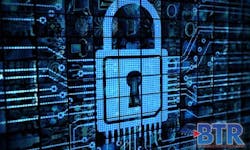The FCC has adopted new rules requiring implementation of caller ID authentication using STIR/SHAKEN. The rules are intended to protect consumers against malicious caller ID "spoofing," which is often used during robocall scam campaigns to trick consumers into answering their phones.
STIR/SHAKEN is designed to enable phone companies to verify that the caller ID information transmitted with a call matches the caller's phone number. Widespread deployment of STIR/SHAKEN is expected to reduce the effectiveness of illegal spoofing, allow law enforcement to identify bad actors more easily, and help phone companies identify calls with illegally spoofed caller ID information before those calls reach their subscribers.
The order requires all originating and terminating voice service providers to implement STIR/SHAKEN in the Internet Protocol (IP) portions of their networks by June 30, 2021, a deadline that is consistent with Congress' direction in the recently enacted TRACED Act. The FCC formally proposed and sought public comment on mandating STIR/SHAKEN implementation in June 2019.
The FCC also adopted a Further Notice of Proposed Rulemaking to take public comment on expanding the STIR/SHAKEN implementation mandate to cover intermediate voice service providers; extending the implementation deadline by one year for small voice service providers pursuant to the TRACED Act; adopting requirements to promote caller ID authentication on voice networks that do not rely on IP technology; and implementing other aspects of the TRACED Act.
The FCC estimates that the benefits of eliminating the wasted time and nuisance caused by illegal scam robocalls will exceed $3 billion annually. Additionally, when paired with call analytics, STIR/SHAKEN is expected to help protect American consumers from fraudulent robocall schemes that cost Americans approximately $10 billion annually. Improved caller ID authentication is also expected to reduce spoofed robocalls that disrupt healthcare and emergency communications systems.
